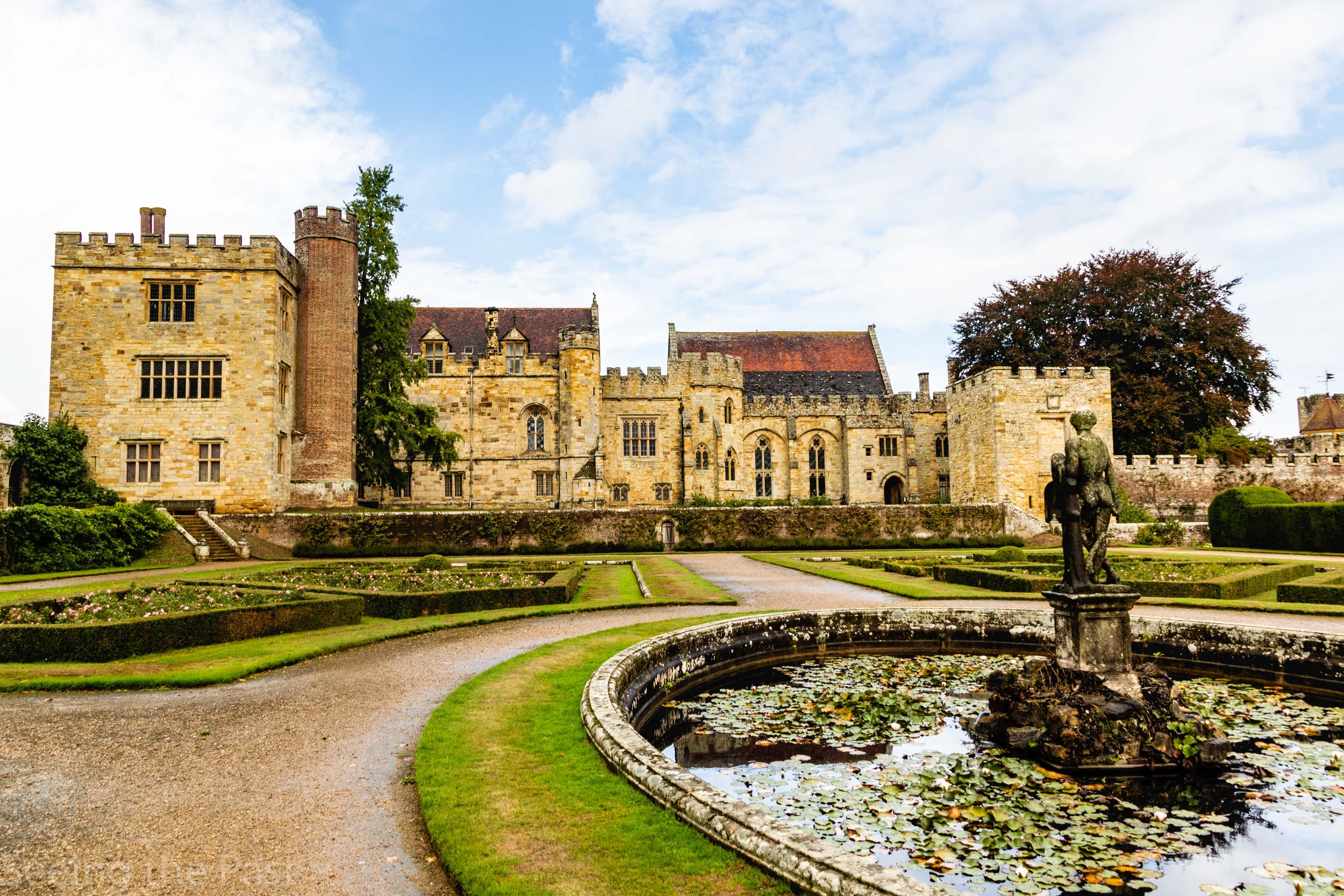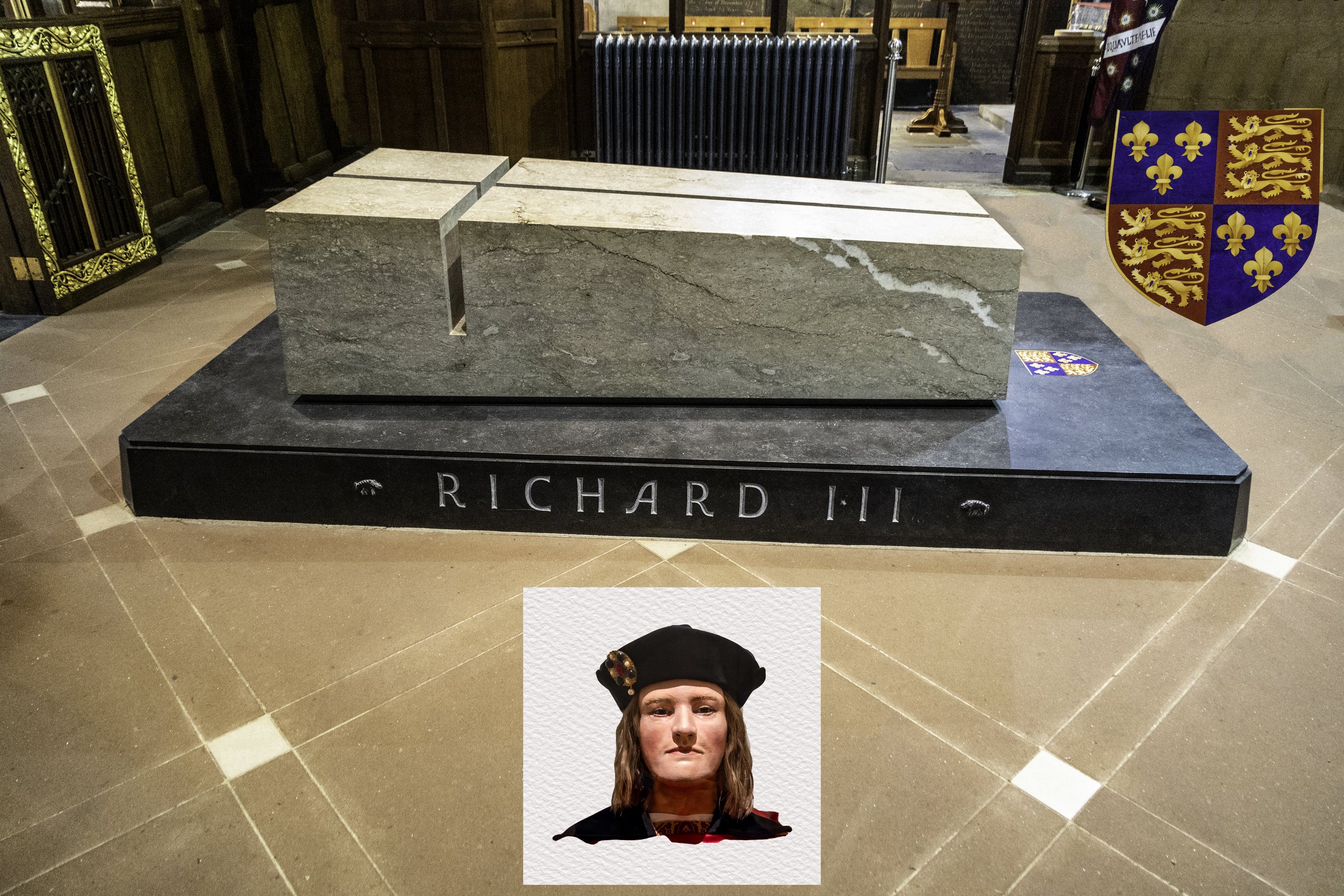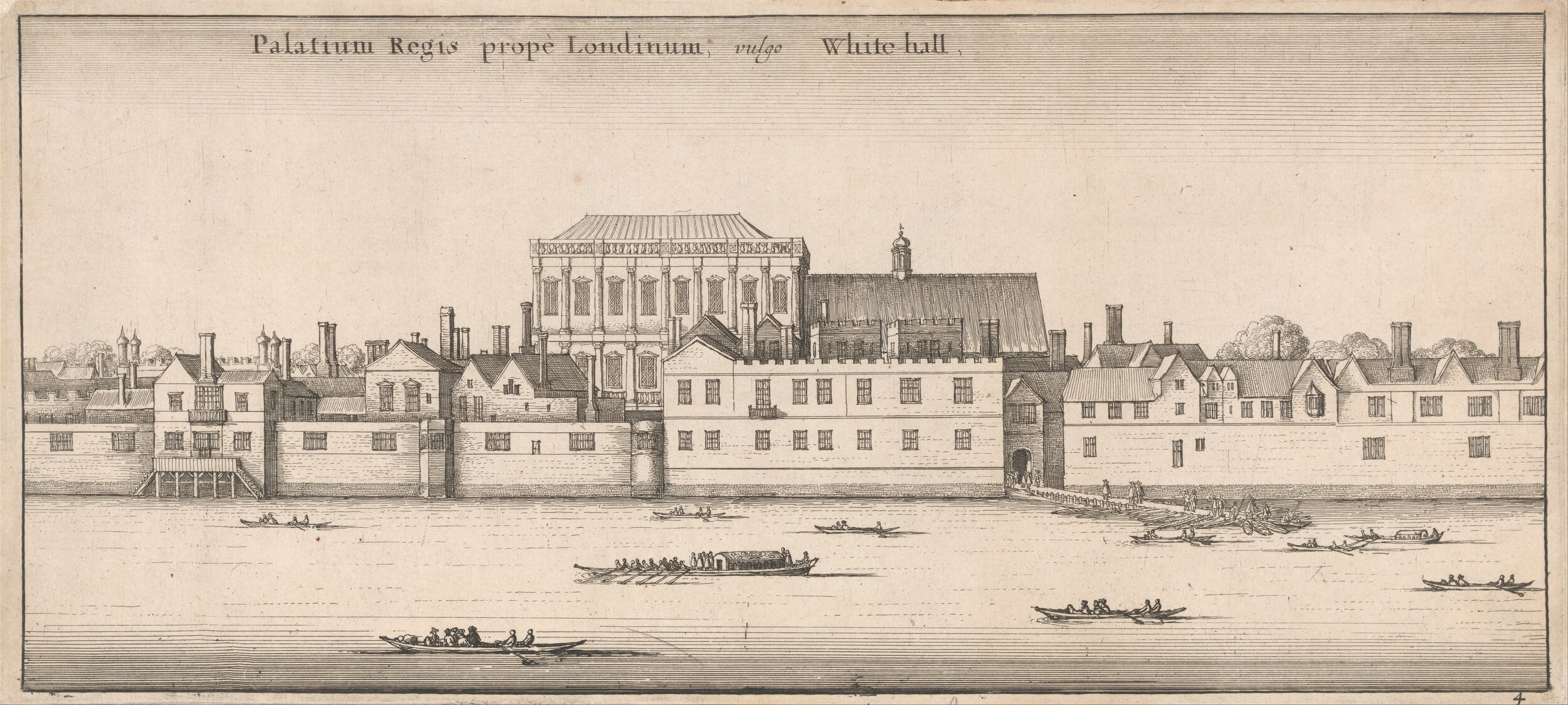How did Lord Sandys try to impress Henry VIII?
/Henry VIII was such a powerful, dominating king that a visit from him would be very costly and did not just mean a sumptuous meal. Not even a few alterations to the decor would be enough if a man, such as Lord Sandys, wanted to gain his favour on a regular basis. Getting it right would mean a huge elevation in status, key jobs with prestigious titles and a vastly increased income. To be seen near the king and have such a job would mean others would be want to be in Sandys’ company and offer favours for advancement. Get it wrong and a big fall from grace would take place with “doors being closed” all around. A visit to the Vyne will give you an insight into the lengths that Lord Sandys went to in order to get on the right side of Henry VIII and his current wife.
Even on a typical wet winter’s day, the walk from the car park to the mansion is still beautiful. Inside, are a whole variety of fascinating objects to observe in a series of rooms from various periods. We particularly liked the Tudor sections and discovering references to Henry VIII and his first wife Katherine of Aragon. What is ironic is that the house has numerous emblems of Catherine of Aragon in the “Long Gallery”, and in the chapel, yet Anne Boleyn visited it twice and must have seen them! In the Long Gallery, you will see emblems or heraldry of numerous Tudor notables and it is fun discovering and recognising as many as you can. Another high point of the Vyne is the beautiful chapel and its stained glass windows. You will be able to see stained-glass portraits of a young Henry VIII kneeling, wearing a crown and in armour and in another window Katherine of Aragon, again kneeling and wearing her crown. Lastly, in the right hand window, you can see Henry’s sister Margaret, the Queen of Scotland. Margaret being the grandmother of Mary Queen of Scots and was the lineage that Mary could claim the throne of England and the lineage which, her son, James VI of Scotland became King James I of England.
The Tudor chapel
How big was the Vyne?
John Leland, having travelled all over England writing about major houses and former monasteries with reference to important libraries and notable books, wrote in 1542 that the Vyne, “is one of the principal houses in all Hamptonshire” , ie Hampshire. It has been suggested that the Vyne, in Tudor times was a much larger building almost equalling the massive, Hampton Court. It was once a small collection of medieval buildings but under the ownership of William, Lord Sandys, it became a much larger Tudor mansion.
Who was Lord Sandys, the owner of the Vyne?
Sandys became an “A list” celebrity under Henry VIII, rising to the position of Lord Chamberlain. His rise began in the reign of Henry VII and on the accession of Henry VIII, gained the position of honorary bodyguard, constantly appearing on ceremonial occasions and being one of Henry’s fully trusted officials. Early on, under Henry VII, he was giving the crucial roles of receiving Catherine of Aragon when she landed in England to marry Prince Arthur and later, accompanying Henry' VII’s daughter Margaret, to Scotland for her marriage to the Scottish king, James IV.
Katherine of Aragon
Sandys’ status was further enhanced when Henry VIII visited him at the Vyne only a few months after his coronation. His rise in responsibility and status was demonstrated further in 1514 when Henry asked Sandys to accompany his sister Mary to France in order to marry king Louis XII. In 1520, anyone who was anyone had to be at “The Field of Cloth of Gold”, a huge meeting in France where Louis and Henry VIII met to cement their relationship and show off to the maximum.Needless to say, Sandys was there also. The event involved golden tents, amazing costumes, huge feasts, jousting and even a wrestling match between Henry and Francis. Henry even had a temporary palace erected that covered an area of about 10 000 square metres! Red wine flowed from two fountains outside and inside two royal monkeys covered in gold leaf entertained visitors. By 1526 he was appointed Lord Chamberlain and had to be in attendance to Henry wherever he was to help him make decisions. So, with his high profile and responsible jobs came a large income and a much enlarged and grandiose Vyne was the result.
Sandys the loyal supporter, no matter which wife Henry had
Henry VIII visited the Vyne three times, firstly when married to Katherine of Aragon and in August 1531 with his mistress, Anne Boleyn. When Katherine was divorced, he loyally attended Anne Boleyn’s coronation and invited the King and his second wife to the Vyne in October 1535. However, in the following May, Sandys was one of the jurors at Anne’s trial and later escorted her to her execution. Later still, he was in attendance in October 1537, when Jane Seymour gave birth to Henry’s long-for male heir, Edward VI and sadly, also attended Jane’s funeral four weeks later. He himself died in 1540 after a long loyal service to his monarch.
Tudor symbols all over the walls of the Long Gallery
The walls of the Long Gallery are covered in Tudor wood panelling called linenfold. This is meant to resemble the folds of a linen sheet but in wood. Sandys’ original linenfold was turned into a “who’s who “ of Henry VIII’s England as you can see below.Henry VIII could not fail to recognise Sandy’s admiration and loyalty wherever he looked.
The royal coat of arms and a crown.
Above you can see a combined emblem of Henry VIII and Katherine of Aragon or possible a rose merging with the sun which is Lord Sandys’ emblem. Below you can see Katherine’s pomegranate symbol.
Here you can see Katherine of Aragon’s pomegranate which is the symbol of Granada a place conquered by her father, Ferdinand ll and the castle, which represents Castile. Together they illustrate Katherine’s origins.
The pomegranate is also a symbol of fertility. There was great hope that Catherine would produce heirs for Henry and so continue the dynasty.
Cardinal Thomas Wolsey was Henry’s chief adviser and chancellor until he failed to solve “Henry’s great matter”, his divorce from Katherine of Aragon.
You can also see Lord Sandy’s symbols which include a winged goat.
Henry VIII’s coat of arms above the doorway.
The placing of Henry’s coat of arms over the doorway is thought to show the entrance to Henry’s chambers!
In 1525, Sandy’s commissioned three stained glass windows for his chapel, again illustrating his admiration of everything to with Henry.
Henry’s first wife, Katherine of Aragon is depicted in the left hand window.
A young Henry VIII can be seen here in the middle.
This depicts Henry VIII’s sister Margaret who married King James IV of Scotland.
In the chapel you can see pews (church seats) dating from Henry VIII’s reign with more symbols representing Henry and his first wife, Katherine of Aragon.
The Vyne has a Roman Medallion similar to those at Hampton Court.
In the Stone Gallery, which was given the name "the “greenhouse” in 1754, is a huge terracotta medallion of the Emperor Probus, the man who introduced vines into Britain. Apparently, it is one of the earliest examples of Italian Renaissance sculpture in England and and dates from the 1520s. It resembles medallions that adorn the walls of Hampton Court but may have been moved here from the Tudor “Holbein Gate” in London when its original host was about to be demolished, possibly in the 1750s.
The Vyne has a fine collection of tapestries
The Vyne is also famous for its amazing 18th Century tapestries. Most of these had been sent to Belgium for very careful cleaning and so I have only this one to show you here.
Essential Information
Getting there.
By car;
Four miles north of Basingstoke between Bramley and Sherborne St John. Entrance to visitor car park is on Morgaston Road.
SatNav: Will not take you to the main car park, instead follow National Trust brown signs and reach the visitor car park off Morgaston Road.
Parking: Parking is free. There is a 1/3 mile walk between visitor reception and the house.
Address, Vyne Road, Sherborne St John, Basingstoke, Hampshire, RG24 9HL
By train;
Basingstoke 4 miles - taxi rank available outside of train station. Bramley 2½ miles - requires a walk of 2½ miles from this station. Note: Vyne Road has no foot paths.





































Framlingham is a great castle to discover and has a fantastic story to tell as well as having a song written about it by Ed Sheeran in 2017 featuring its part in his upbringing. It was successfully besieged by King John and was Mary Tudor's refuge in the succession crisis. It is surrounded by beautiful parkland that was once the hunting ground of the dukes of Norfolk and has a great wall walk that enables visitors to wander three quarters of the length of the surrounding walls in safety. It has a small informative museum and a cafe which offers a good range of hot and cold seasonal meals, baguettes as well as choice of delicious cakes, snacks and offers a good quality coffee.